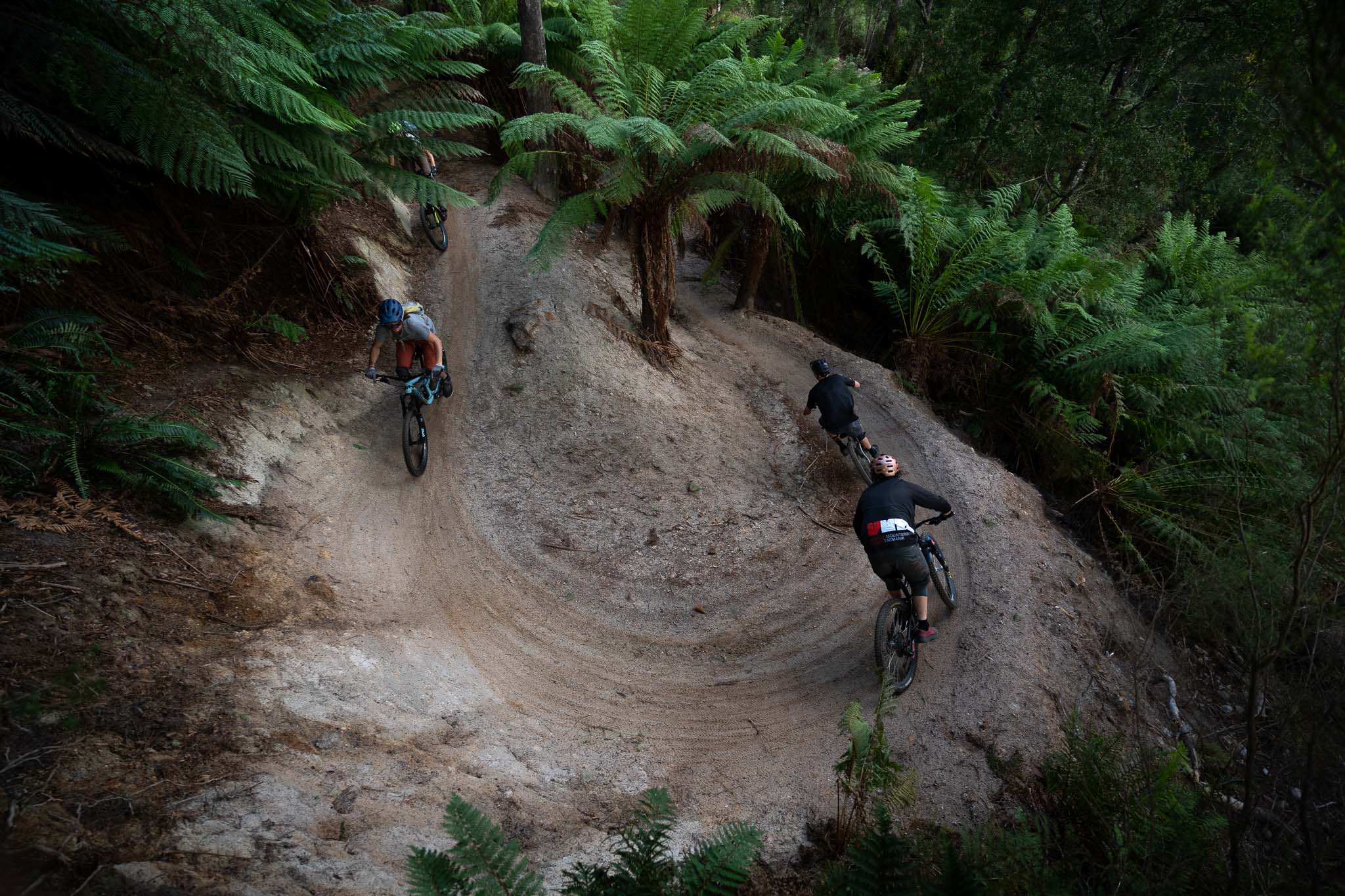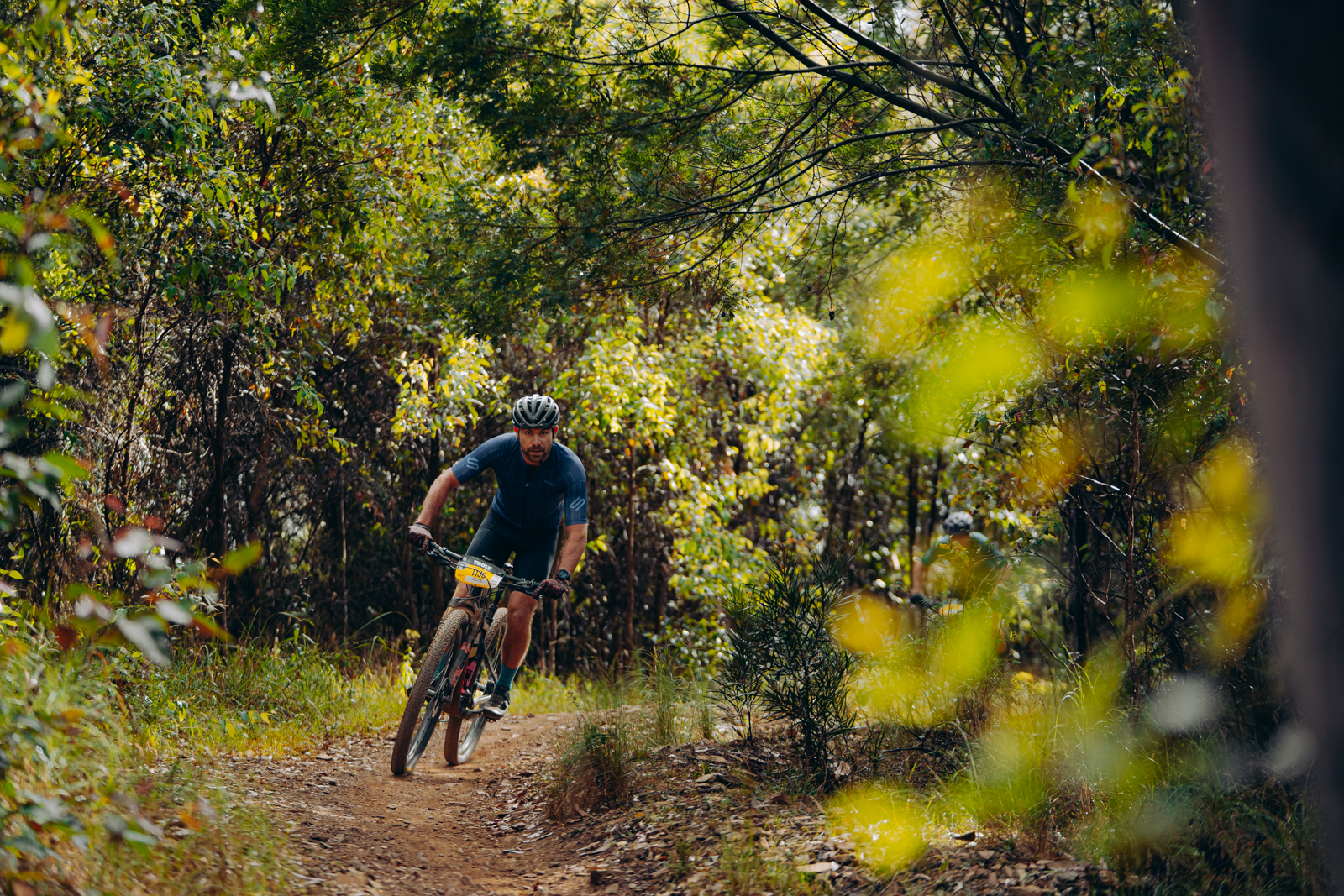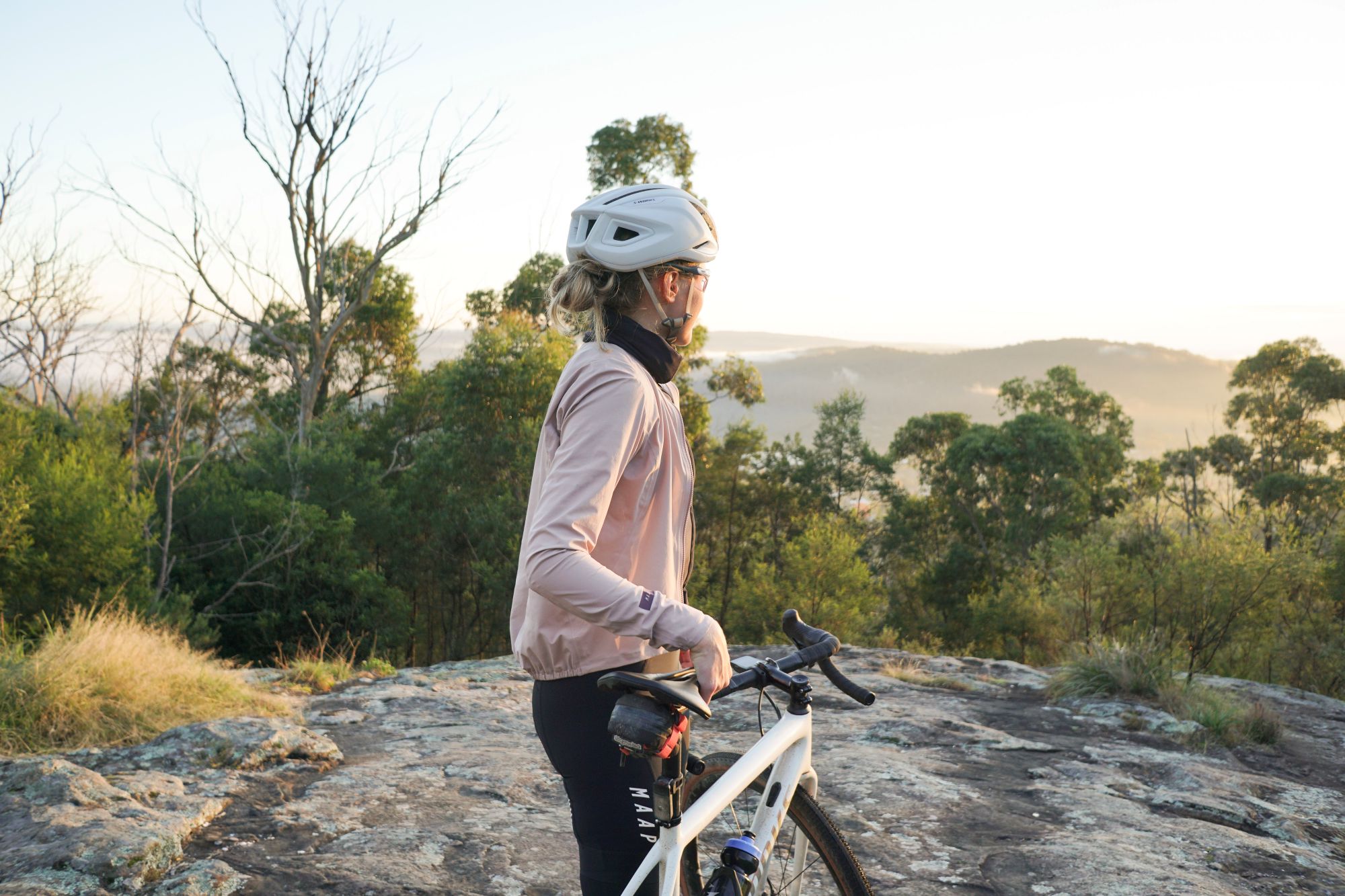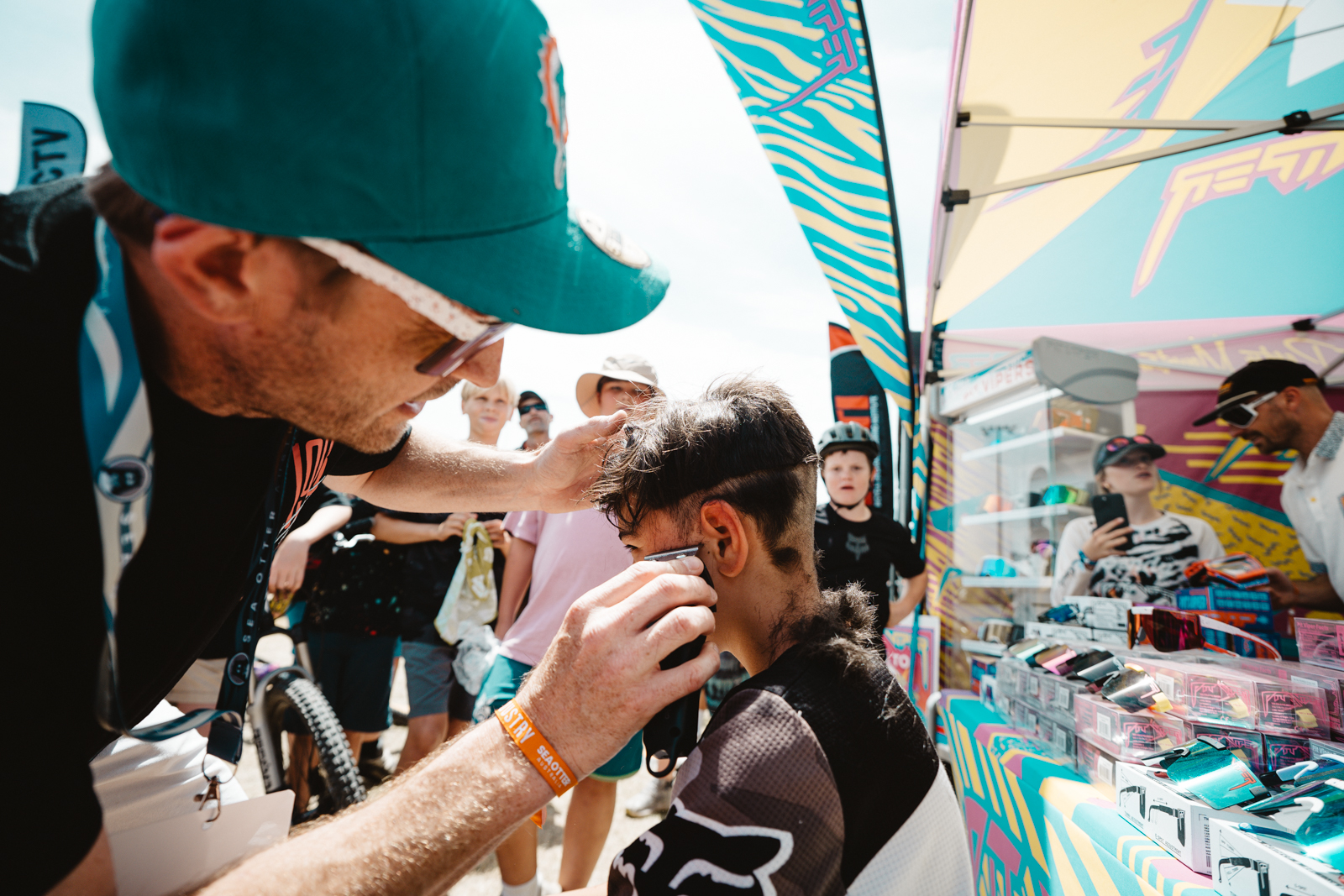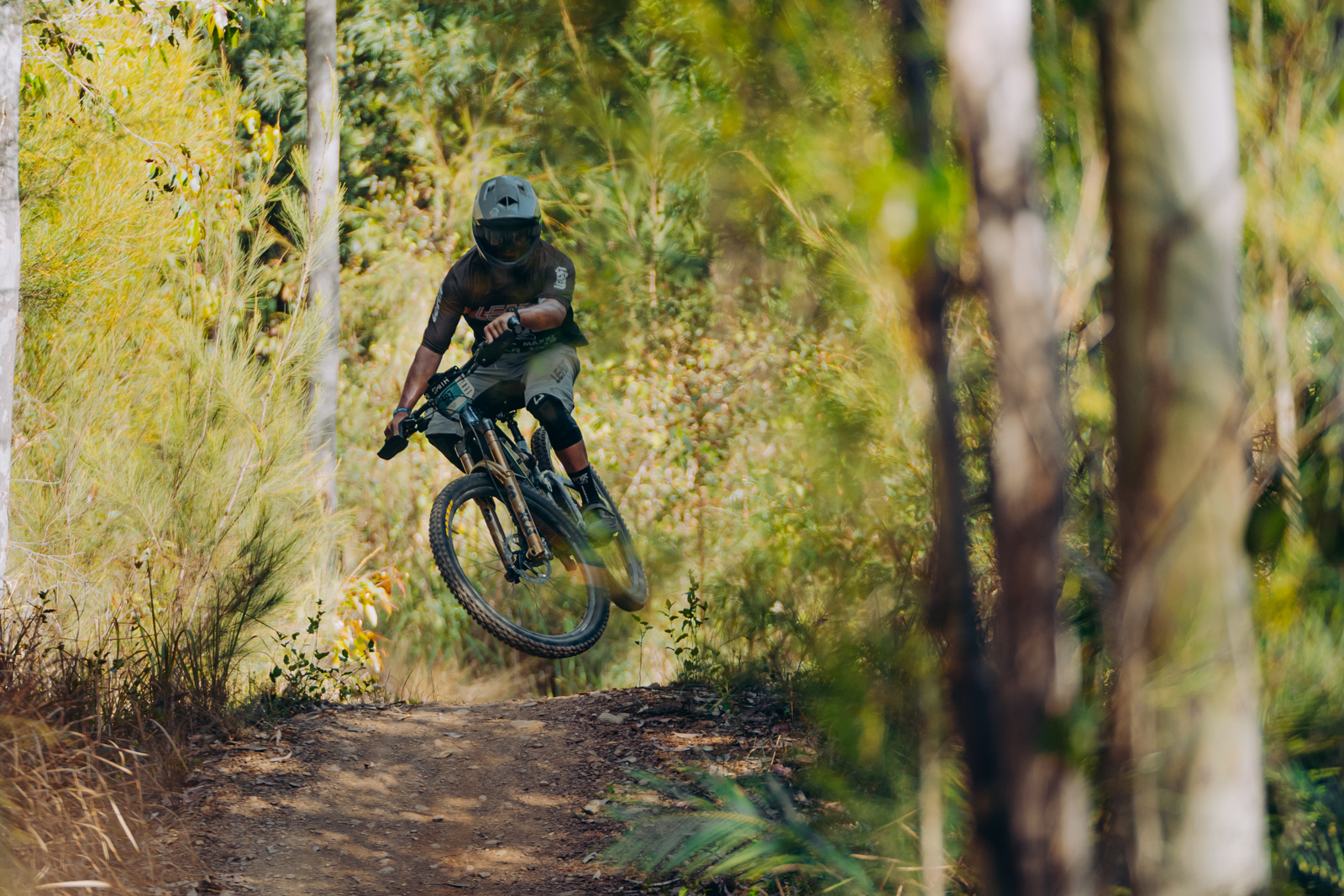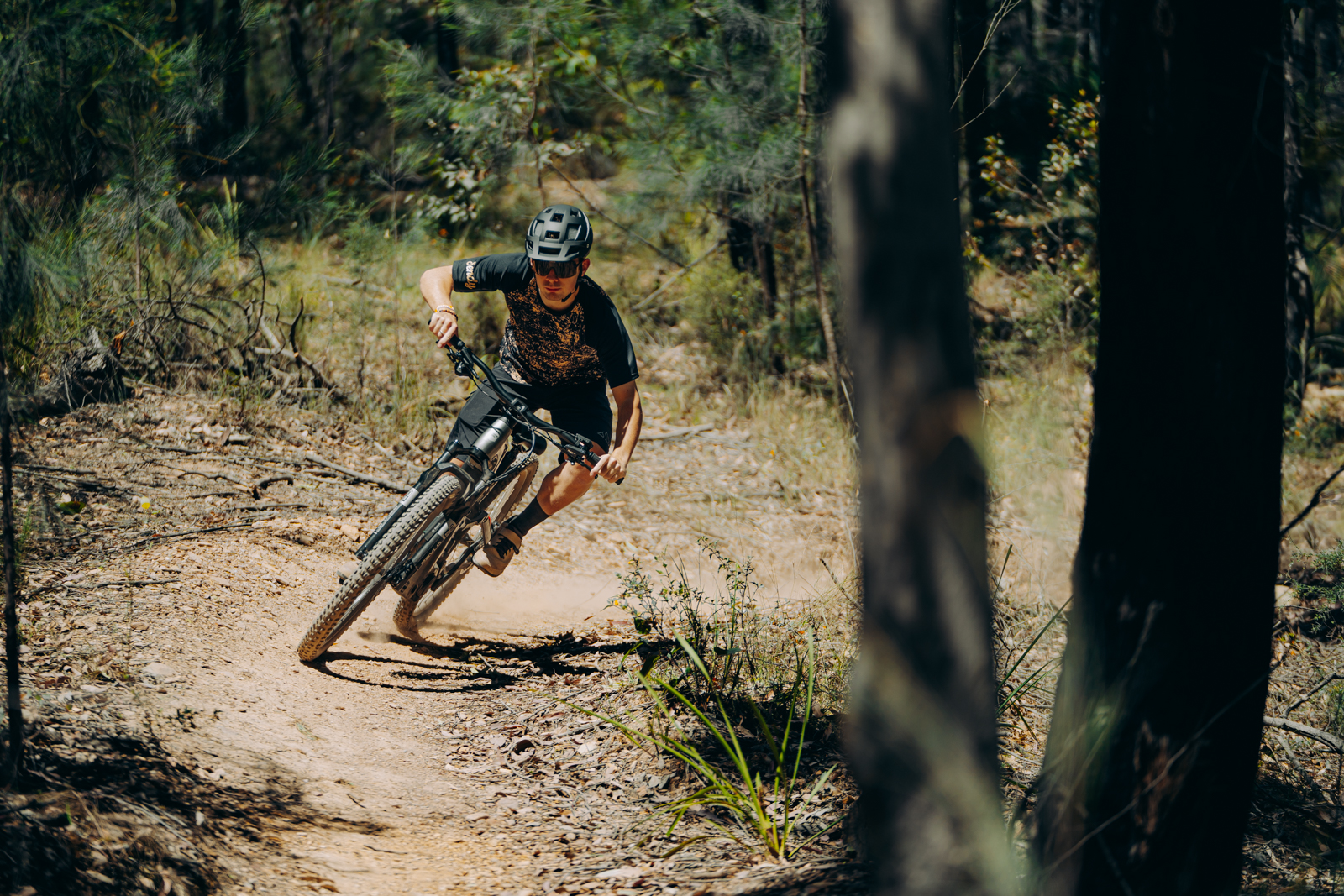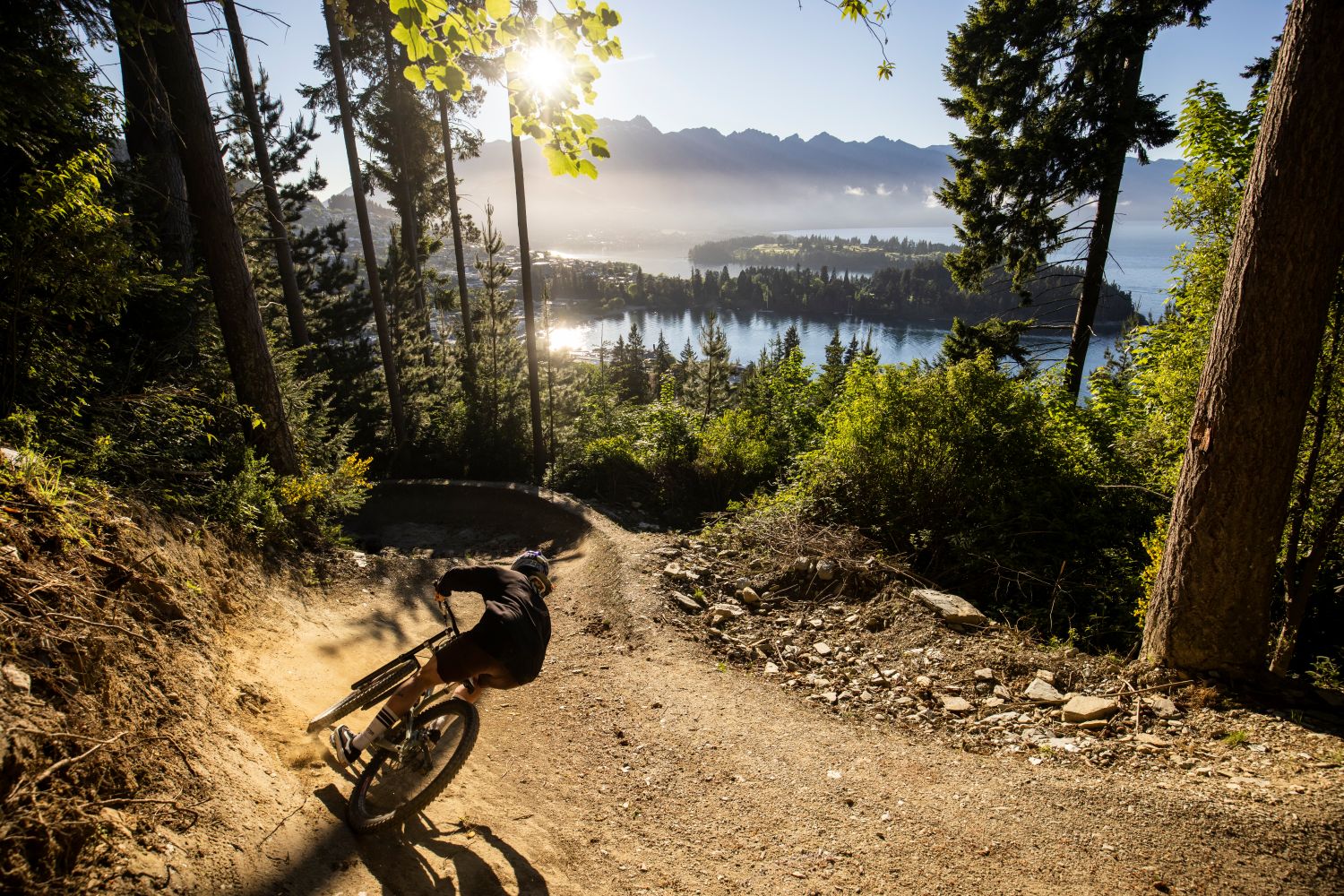Derby: Then and Now
AMB first visited Derby in a cool February in 2015. Our first impressions of the town were bleak – it was difficult to anticipate what it would become. Going into the new trails though, we got it.
Words: Imogen Smith
Photos: Josh Firth
Derby’s first chapter
In the late 1800s, Derby was big. It was famous. It pulled visitors from around the world. Derby sat atop some of the richest tin mines in the world, and tin was booming (a bit like lithium today). As the money poured in, it paid for vast engineering follies in the rugged wilderness around town. A 600-metre tunnel cut through solid granite to move tailings between feuding mines; a 48 kilometre water race from the head of the Ringarooma River; elevated dams storing millions of litres of water perched in the hills. The idea was to get water rolling at great speeds down Derby’s hillsides, hitting massive mining hoses with enough pressure to strip them down to the prized tin beneath. By the eve of the Great Depression in 1929, Derby would have been the envy of any rural town in Australia, with a school, hospital, shops, factory, and a population of around 3,000 people, not to mention one of the richest tin mining operations in the world.
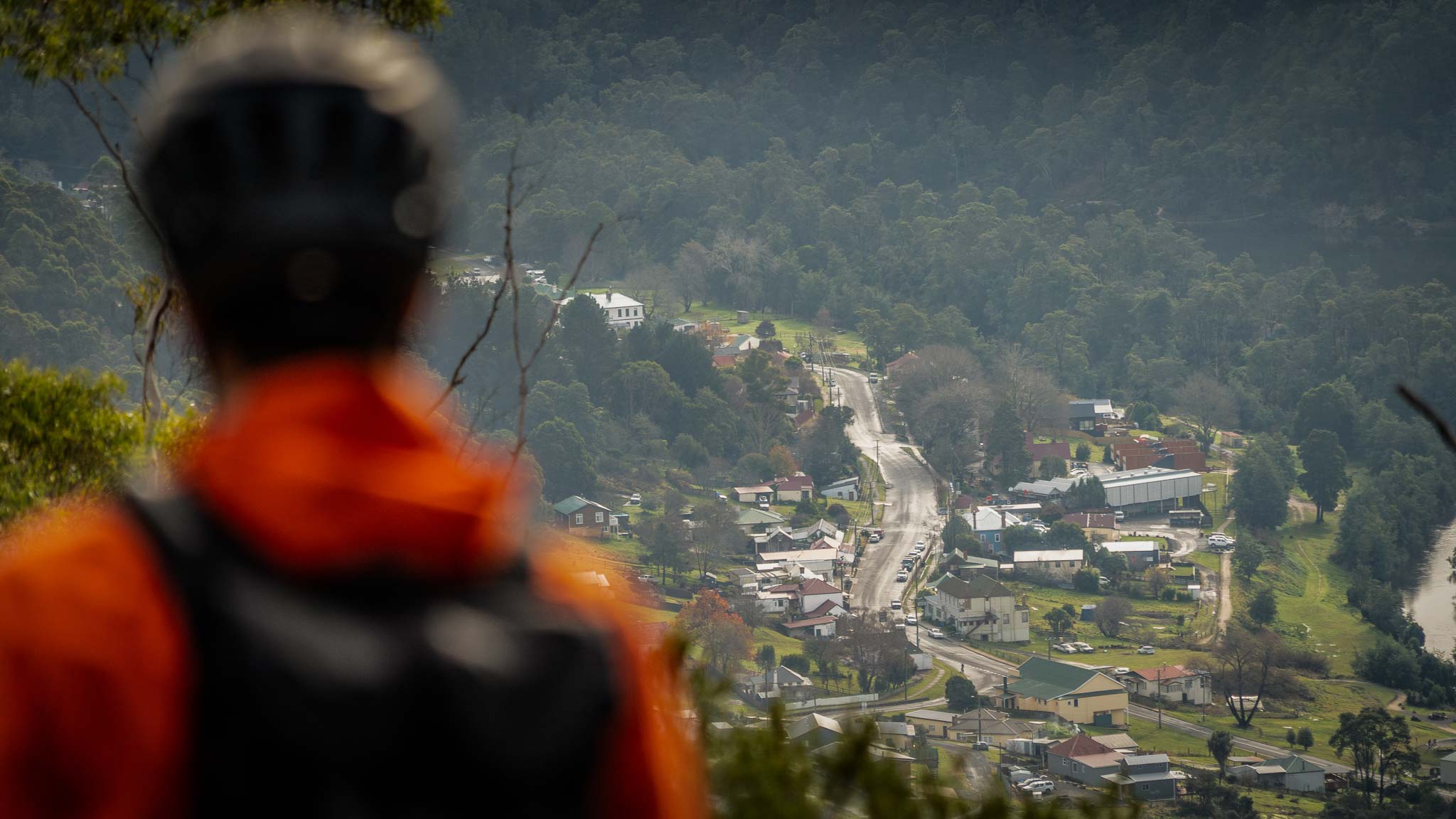
But that year, nature served up a rain bomb not dissimilar to the one that detonated over Australia’s east coast in 2022. After five days of downpour, the Briseis Dam, which held 130 million gallons of water, burst, and a 32-metre wall of water, boulders, mud, and uprooted trees tore down the valley, scouring it to bedrock (MTB trails take you over the scars today). The Ringarooma River ran uphill for 10 kilometres, and bridges up to 100 kilometres away were destroyed. Of course, so was the town and its mines. With the tragic loss of 14 lives, recovery took a long time. Derby began to decline, and every decade it declined a little more. By the early 2000s, the bell was tolling for Derby.
The gamblers
But instead of bells, the local council heard opportunity knocking, and set out on a crazily ambitious plan to revitalise not just Derby, but the entire northeast region. In 2011 a sleepy little consultant’s report called ‘Mountain Bike Tourism Potential in Northern Tasmania’ proposed that with “a lot of work”, northern Tasmania had potential to be a national destination – maybe even an international one. Local council, driven by General Manager Tim Watson, went for it. Ten years and a few million dollars later, there’s no doubt that Derby, the north-east, and the whole of Tasmania are world-class mountain bike destinations, and will remain so.
Tara Howell and her husband Steve had been looking for the right opportunity to set up a tourism business near their Launceston home. As MTBers, they were familiar with the glorious natural environment around Derby and had ridden what trails were already there. They knew the area had potential and when they got wind of Tim Watson’s vision, they made a bet that it would deliver.
Before even a sod had been turned on the Derby trails, Tara and Steve had selected their site and were embarking on a business that would become the world-renowned Blue Derby Pods Ride. Tara remembers that heading through town on one of those early days, the only pedestrian traffic was a sheep. “It was a super, super ghost town,” she says. “Derby had a small number of beautiful locals, but the majority of properties were vacant. There was not much reason to stop there, although it was a lovely little one-street town”.

Tara and her husband, despite their faith, were taking a risk. Just 25 kilometres of trail were funded at first, at a cost of nearly $4 million (which would buy you a couple of prime properties in Derby today). The promise that mountain biking could revitalise an entire region’s economy had little precedent in Australia. Sure, there had been major trail developments in ski resorts like Mt Buller, and perhaps Canberra’s Mt Stromlo. But all of those came from different motivations: many of the alpinei trails had been established by private enterprises to make money in the green season, and Stromlo was developed to contribute to Canberra’s bushfire recovery. And none of them promised as much.
AMB first visited Derby in a cool February in 2015. Our first impressions of the town were bleak – it was difficult to anticipate what it would become. Going into the new trails though, we got it. Towering tree ferns, flowing water, creeks, incredible granite rock forms and layers of tin mining history all incorporated into the trails. Everything had been purposely built. Lovingly built. And after just a few months, the trails already felt like they’d grown into the place. It was pretty impressive.
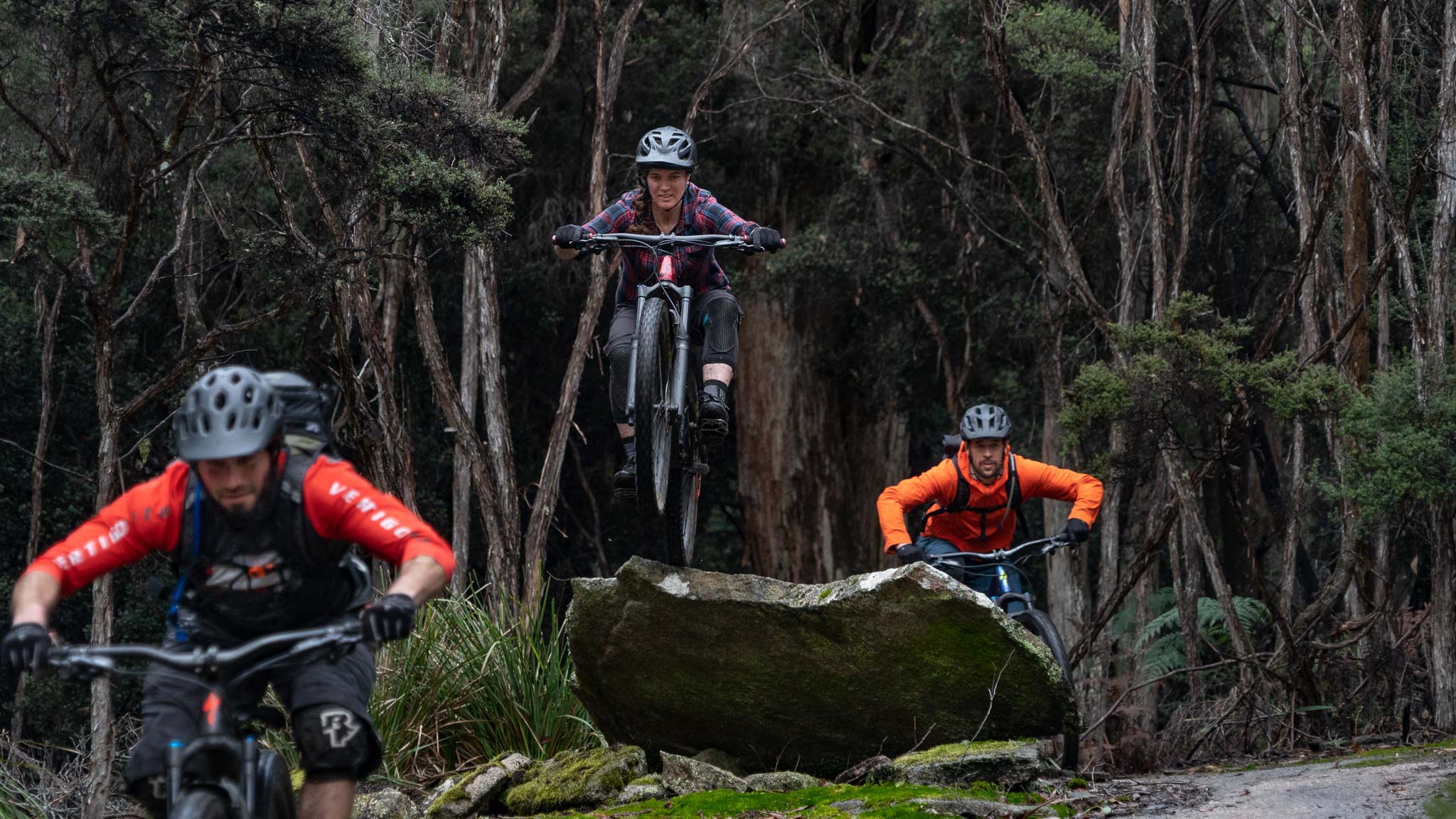
But while the trails were amazing, the town just wasn’t ready. The businesses weren’t really up and running. There was maybe one Airbnb, one place to get food and that was limited to weird opening hours.
Peter Coleborn’s father-in-law has farmed the hills that roll around Derby his whole life, the sixth generation of his family to do so. On a visit home with his wife in 2015, Peter noticed how dead the place was, how quiet. He also went for a ride, and noticed that that was some of the best he’d done in Australia.
Peter liked it so much that he and his wife, looking for a change, decided to relocate to the family farm permanently. It wasn’t yet time to become the seventh generation farmer, so Peter looked for a job in town and landed work with World Trail, then building stage two of the Derby network. He’s never looked back and is now one of council’s permanent employees maintaining the singletrack.
“Derby prices”
“Let’s call it sleepy” Peter says, when I ask him about the town then. “There wasn’t a whole lot going on,” he says. As Derby’s first few years as MTB mecca ticked over, it became clear that not many of Derby’s mostly retired residents had the motivation or the capital to set up businesses or subdivide lots, opting instead to sell up. To put things in perspective, a property that was worth the average $115k before the trails opened in 2014 would have doubled or tripled in value to by 2019. Today a modest, un-renovated cottage on an average block of land in Derby will start at $550k and go skywards.
When I ask Peter about what that’s meant for the community, he explains that rather than being forced from their homes, locals have been able to buy into areas that were out of reach before. “They’ve been able to sell their house for good money and move to Scottsdale or Launceston where they can be close to services like shops and the bank and the medical centre,” says Peter. “They don’t have to drive 40 or 50 kilometres now to visit the doctor, and that’s a good thing.”
A more pressing issue now is where to house Derby’s growing army of workers, which can ebb and flow with the season. With the majority of dwellings in Derby being short-term rentals that go for around $150 a night or more, lodging in Derby is way too expensive for anyone but holiday-makers. With houses in towns further from the trails mostly filled with owner-occupiers, Peter explains that Derby has its own, albeit seasonal, housing crisis, to the point where dedicated, budget workers’ accommodation is badly needed (and on the cards).
“It’s definitely something that’s being looked at,” says Peter, “something that needs to be built really soon. This is where surrounding areas like Ringarooma, Legerwood, and Winnaleah have benefitted, too. “There are a few of the mountain bike workforce living in Winnaleah now,” Peter explains, “you can’t access the trail network directly by bike from some these towns, but it’s just so much more affordable.”
Boomtime 2.0
Where in 2015, 10 beds were all you’d find available in Derby (at a stretch), these days there are about 75 Airbnbs – that’s maybe 150–300 beds. It’s easy to think that with locals moving out and investors moving in, that the cash thrown at the town sails over locals’ heads and lands neatly in someone’s pocket in Sydney or Melbourne.
Steve and Shan moved to Derby from Noosa in about 2017 having bought Millies, a well-known, chocolate-box cottage in the centre of Derby. Steve explains that the couple’s personal attraction to the town led them to invest, and that changed everything. “It was an investment at first,” says Steve, “but it became a complete lifestyle change.” Steve is quick to point out that by no means are Derby property owners absentee landlords from Sydney and Melbourne: “something we’ve done over a beer,” he says, “is think about all the Airbnbs in town and worked out who owns what. We reckon about 60 per cent of the properties in town are owned by people who live in Tasmania, be it Launceston or Hobart or closer by.
And of course, the boom in Derby and surrounds has brought a whole lot of work to the area – not just directly related to the somewhat seasonal mountain bike industry of shuttle driving and bike hire. Every single miner’s cottage, shack, or custom-built chalet in Derby comes adorned with a spanking-new deck, for example. “The fact that buyers, some of whom are interstate, have come along and bought an old miner’s cottage that needs a new roof on it and a deck – you have to employ a local to do that,” says Peter Coleborn. In Derby’s region, builders, roofers, tilers, plumbers, electricians, and landscapers are run off their feet, bringing another injection of working-age families and professionals to an area where 70 per cent of the population was over 60 just a few years ago.
Steve and Shan are a great example of the Derby employment boom. Long retired themselves, the thriving short-term rental scene in Derby meant they became accidental entrepreneurs, long after they thought they were finished punching the clock. Enjoying local’s night at the pub a while ago, they offered to help some friends with lawn maintenance on their short-term rental. Less than a year later, and they’ve had to move to a property out of town to gain enough shed space to house their two ride-on-lawnmowers, trailers, and equipment, and they’re employing others in their growing landscaping business.
Ever taken a shower in Derby? Money from the showers goes to the local Lions Club so they can continue to support the community with projects donated by council. A brave Peter Coleborn went along to one of the regional meetings recently to find they were “all so stoked on the mountain biking, very supportive,” he says. “It allows them to help the community, and they’re so impressed with the increased energy in the district.”
Worth more standing?
One of the many side effects of the mountain bike boom in Derby has been increased attention given to native logging in the area, both in the community, the wider mountain biking scene, and in media outlets like this one. While the coupes that are traversed by Derby’s trails are now protected under a new concept plan (not that the trails were ever really under threat), there’s no protection for native forests that surround the area, even just 50 metres from the trails themselves.
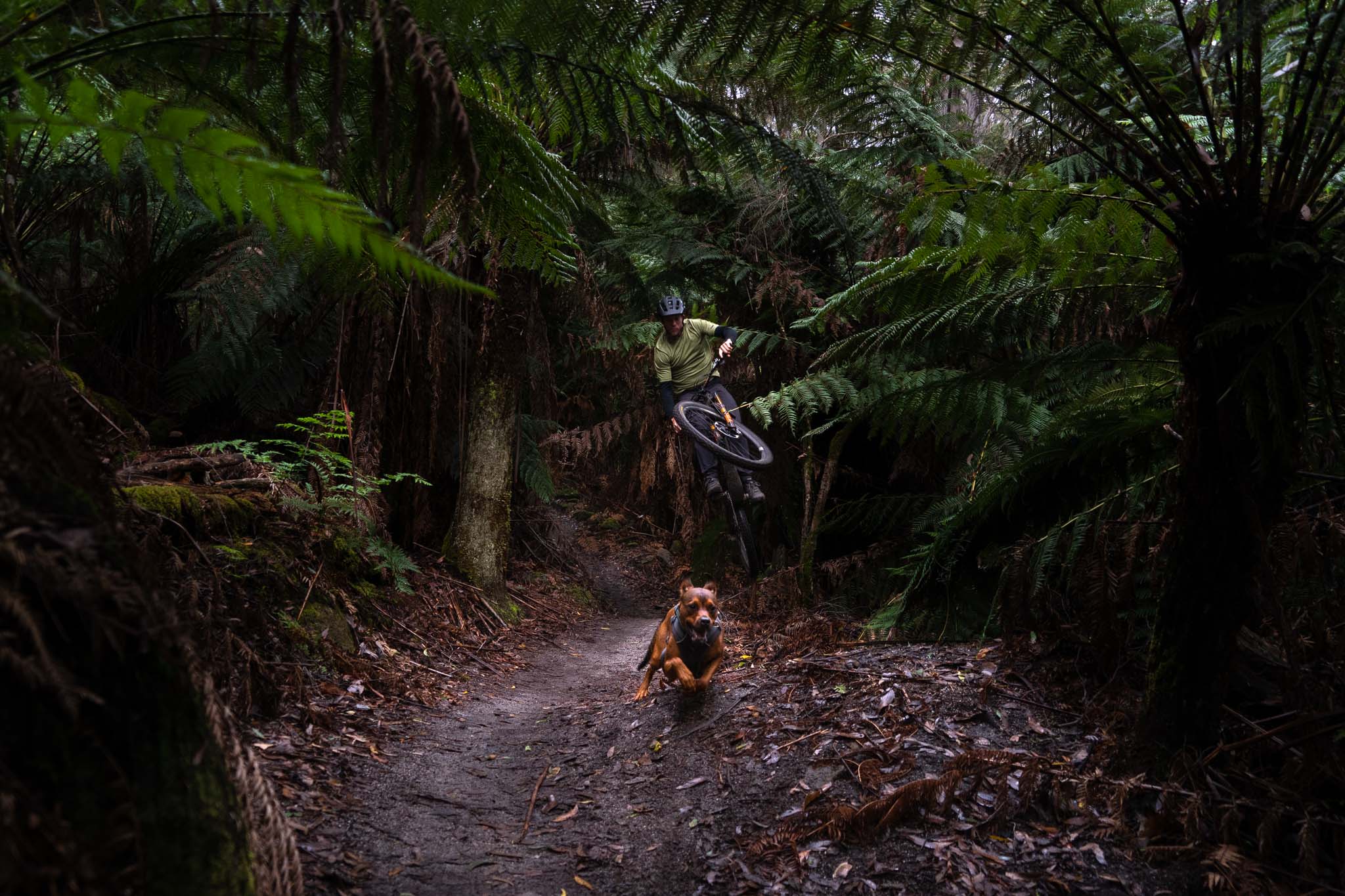
With around 200 signatures from local businesses on an open letter to the Tasmanian government regarding native logging around the local trails, it’s become evident that native forests are being re-evaluated not just for their intrinsic value (as habitat, or carbon sinks for example) but their economic value. As Tara Howell of the Derby Pods Ride puts it: “mountain biking has exposed the beauty of those forests, and mountain bikers really do like to ride immersed in the forest. A world-class destination can stay there alongside all these natural assets”. And while only the trails themselves have gained protection so far, Tara is optimistic. “It’s a start,” she says.
Reaching for peak Derby
If tin-mining Derby once held a population of 3000, and today there are maybe 200 permanent residents, it’s easy to argue that there’s still room for growth. While Derby’s story so far is one of overwhelming success and renewal, it isn’t one that’s come without its tests, and the big daddy of them all, COVID-19, arrived right when Derby was gaining international recognition and rooms were selling out year-round. But in usual fashion, the locals treated it all with optimism, and were blown away by the support of the Tasmanian mountain bike community. Steve tells me that apart from the hard lockdowns, the town stayed lively because the “Tasmanian people were great. We opened just before the school holidays and it was one of the busiest times”. And recovery has been fast. “It interrupted the trajectory of the growth, but we’re still growing. It’s still going upwards.”
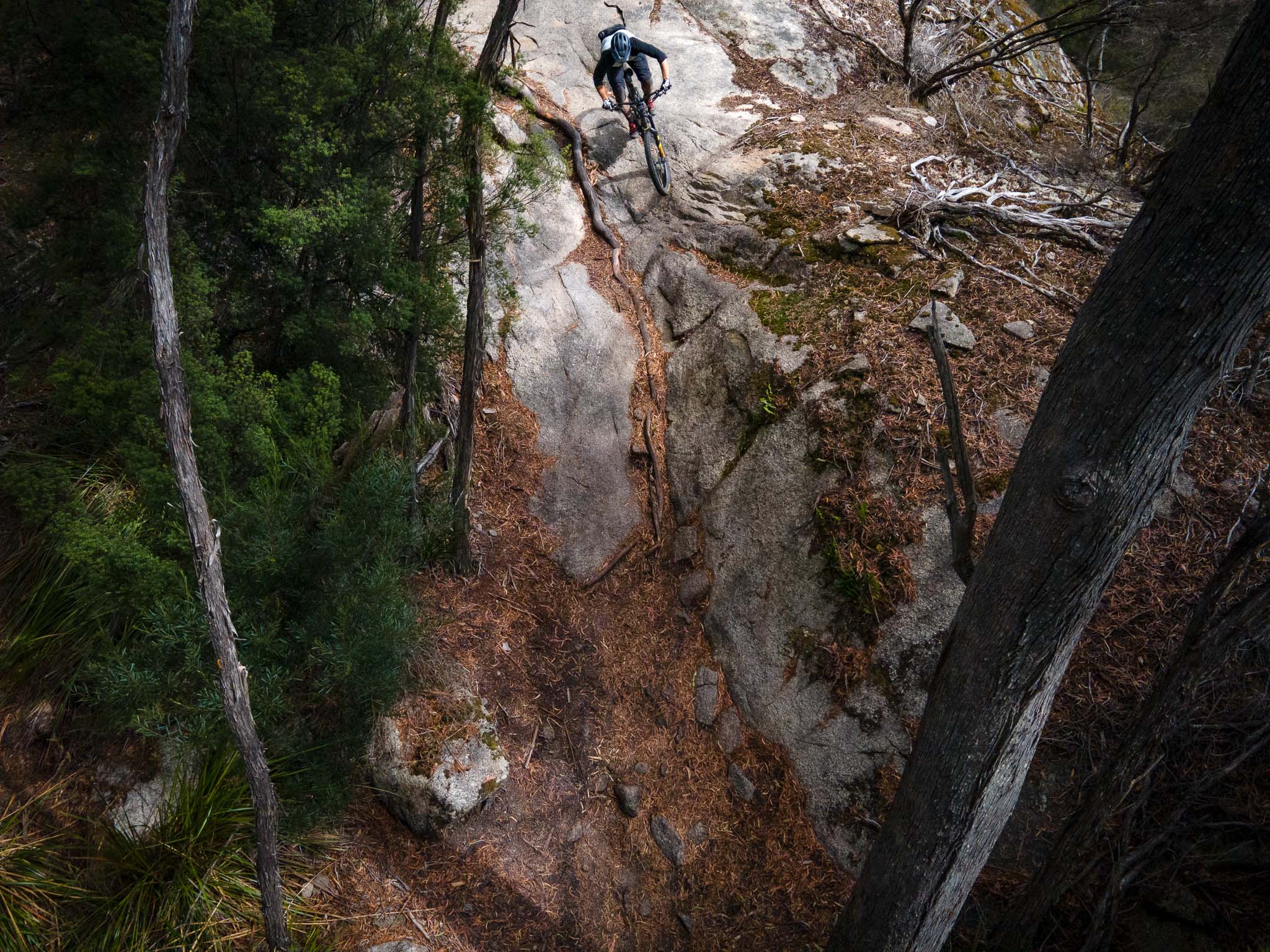
The locals I spoke to were at pains to describe what Tara called the “beautiful new community” that’s emerging in Derby and its surrounding ‘suburbs’, where residents of all ages get together for locals’ night at the pub, or shop rides, or visit local restaurants together. “That old community that used to be in Derby,” says Peter, “we’re building a new one like that.”
An intense optimism thumps through the town today. As Steve says, “there’s a good feel about the place”. All the locals I spoke to shared their plans for more innovation, more opportunity, and more community wellbeing. Tara puts it well: “Derby has not yet reached its peak,” she says. “MTB is still going to rise and Derby will continue to grow”. Visiting Derby in mid-2022, I sat for a moment in the sun on the main street and watched well-heeled retirees pull over opposite one of the town’s cafés to sip lattes and watch the bikers rolling by. Where in 2015 the logging trucks rumbled by and there was nothing really to stop for, today Derby is full of colour and life, as well as attractions that reach far beyond bikes alone (hello, floating sauna).
Now one of northern Tasmania’s most desirable, profitable, and successful towns, the future is bright as polished tin.

